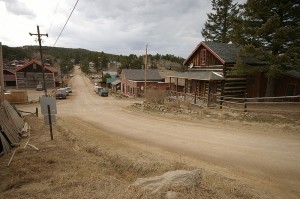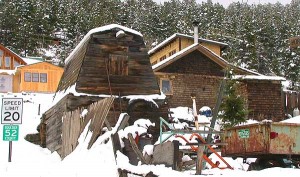Gold Hill History
Gold was discovered in a small narrow stream in January 1859 by a group of prospectors who followed an old Indian trail up Four Mile Creek. This stream, named Gold Run, was said to have yielded $100,000 in gold during the first year. In March 1859, “Mountain District No. 1 at Nebraska” was created. Commonly known as Gold Hill, it was the first mining district organized in the Nebraska Territory.
The original Gold Hill town site was developed on the flats of Horsfal Hill with little planning and organization. However, the lack of water and unfavourable winds made it a hostile place to live.
In May 1860, a devastating forest fire ravaged most of the town, encouraging the majority of its residents to try their luck elsewhere such as farming and ranching on the plains. The remnant pioneers migrated to what is now the current town site of Gold Hill.
Miners had previously searched for gold but in 1872 a rich form of tellurium (combination of gold and telluride minerals) was discovered and once again miners flocked to the hills with dreams of becoming rich. This time the town site was built in a much more hospitable location, between the gulches of Gold Run and Lick Skillet. Soon Gold Hill had a school, post office, general store, hotel and several boarding houses.
When mining production declined as the 20th century progressed population dwindled. In 1920, The Holiday House Association of Chicago, Illinois purchased the 1873 Wentworth Hotel as a summer resort for working women. It was renamed the Bluebird Lodge. This gave Gold Hill a much-needed boost; however the depression of the 1930s and World War II hindered the population of Hill once more.

